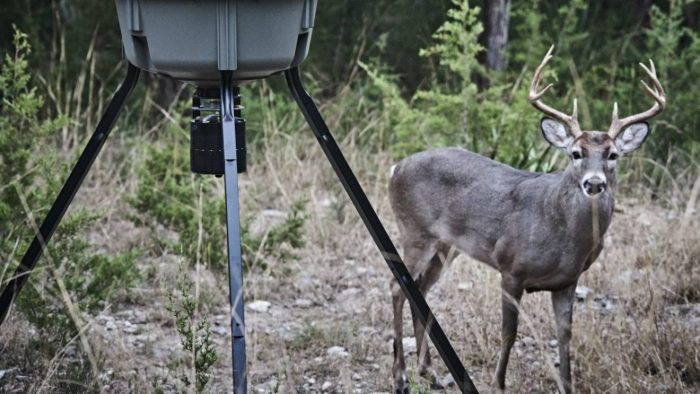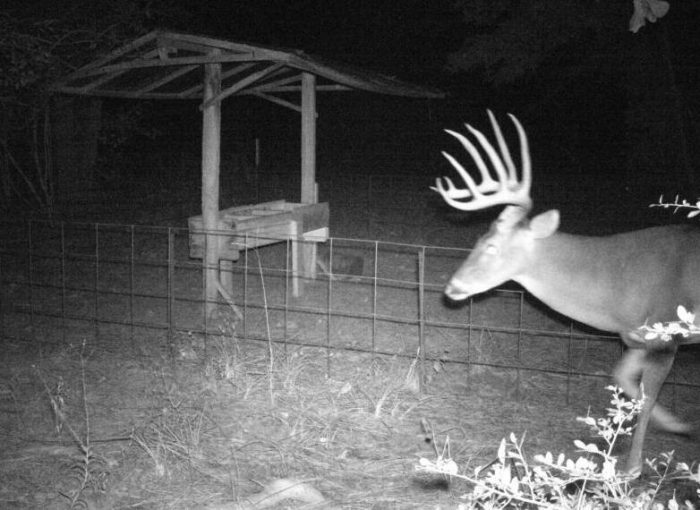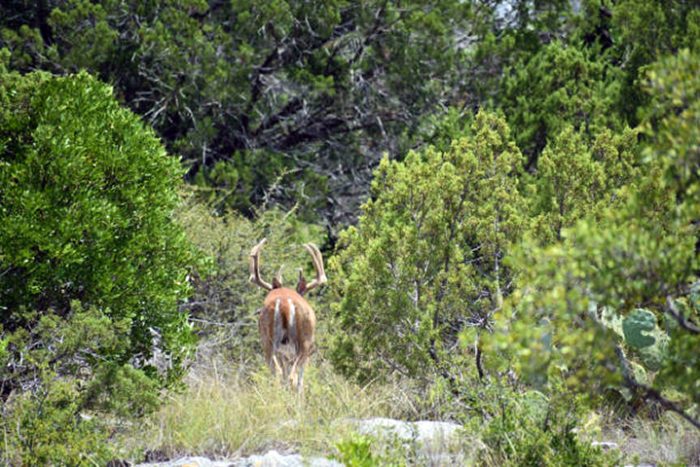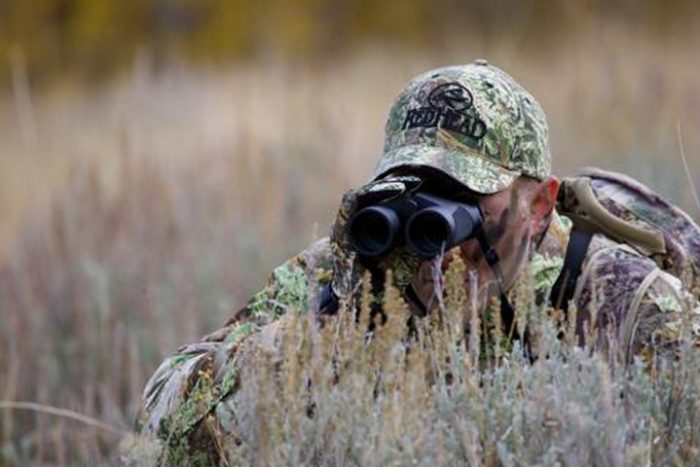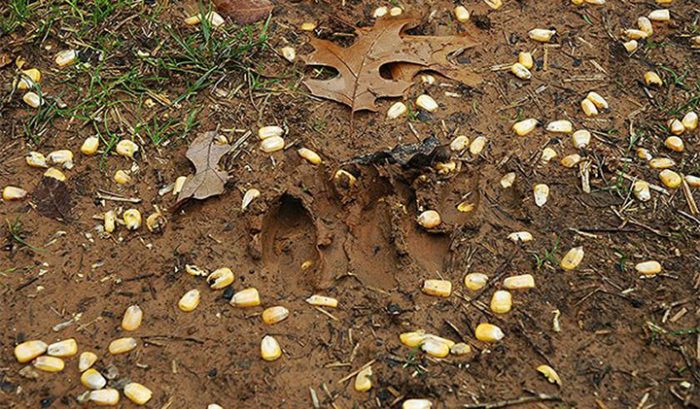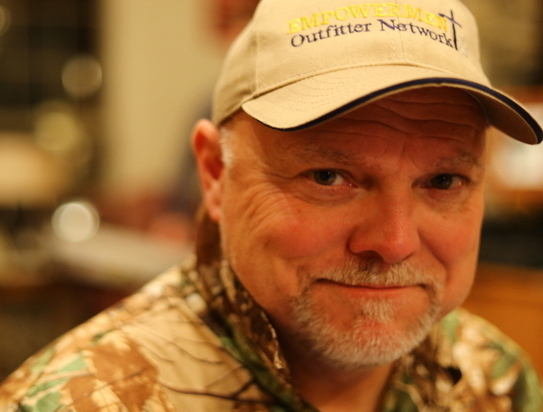Bowhunting Mature Bucks in Legal Baiting Areas
Driving the highways and county roads of Texas, it’s common to see box blinds in and around grain fields and other clearings. Inherently, you’ll also see tripod feeders sitting 100 yards or more away from them. So it goes for the large contingent of rifle hunters in a long-time baiting state. But if you look closely, there’s often a tree stand or ground blind situated within 40-yards of that same 3-legged barrel.
Baiting deer will always be a polarizing topic amongst hunters. While Bowhunting evens the playing field in most people’s eyes, the contention remains. The fact is, baiting deer isn’t nearly the advantage many think it is, particularly when it comes to mature bucks. Being the can of worms it is, I’m not here to debate the merits (or demerits) of hunting over shelled corn or any other deer food that comes in a bag or box. The fact is, it’s a legal part of the hunting culture in many areas of North America. In fact, it’s currently allowed in nearly 30 states.
If you’re a card-carrying member of the “poke and yum” club, bowhunting over feeders is a great way to obtain tasty venison via stick and string, albeit from a plump doe or younger buck. After all, feeder or not, successfully executing a shot at a whitetail is a feat in itself. While the possibility of arrowing a mature trophy-class buck in this setting is also possible, it’s a tenuous endeavor. In fact, seeing one at a feeding station during good shooting light can be a rarity.
If shooting a mature buck with bow tackle is your goal, some strategies can increase your success – strategies other than hastily setting a popup blind 20 to 30-yards from a barrel of corn with an automatic timer.
Here are a few alternative thoughts and approaches to consider.
Don’t Over Hunt
First off, continuously walking into the confines of a popular feeding area will sabotage hunting success, whether you’re seeing deer or not. If you insist on hunting directly over a feeder, chances are a mature buck will detect, if not pattern you sooner rather than later. At a minimum, be choosy about when you enter this area to fill the feeder, check the trail camera, or hunt.
Hunt it During the Rut
As long as you manage your scent, the rut is a more forgiving time to hunt for an older buck at a feeder. While you still want to avoid over-hunting the area, you can usually get away with a little more pressure on a mature buck. Since feeders often draw does, you have the chance to draw a mature buck during this exciting and erratic part of the fall.
Of Trails and Funnels
It’s a common sight. A majestic figure of a big buck appears near or at the feeder during the late dusk. It’s hard to make out details, but the antlers look massive, and its body obviously dwarfs the other deer around. An ethical shot is just not there; it’s just too dark. It sucks.
Instead of sitting mere yards from your feeding station, consider setting up along attractive land features leading to it. Good examples include funnels and draws. Mature whitetail bucks will often choose to visit the feeder after good shooting light. Why not try and get to them before they reach it?
The Watching the Approach Approach
Speaking of hunting an area leading to the feeder site, step back and try to determine a mature buck’s path to the feeder. This is a great way to evaluate a mature buck’s pattern of movement. While it takes a little extra time and patience, this approach makes up for it with less pressure. There are a couple of ways to do this. One way is to sit a couple of hundred yards from the feeder and see what direction he enters the area. Take good light-gathering binoculars. Even if he enters at dusk or sundown, you can often tell what direction he came from and how he likely will approach the feeder area. This may take a couple of sessions from different vantage points, but seeing and evaluating a good buck in decent shooting light goes a long way toward success.
Hunt the Natural Food Sources
Deer love corn, there is no doubt. Another certainty is that, in legal baiting states, hunters are conditioned to put it out and lay in wait. It’s human nature – so much so that many hunters are naturally accustomed to assuming a feeder area is the best place to be at all times. However, there are other variables in play. In addition to over-pressuring feeder areas, natural range conditions can flat-out turn a feeder area into a ghost town.
Often, good rainfall causes green dining alternatives for deer. Of course, a good acorn crop will also keep deer away from feeders. If you insist on hunting adjacent to a feeder area, at least consider hunting over an acorn-producing oak mott or edge cover with good browse. Better yet, be willing to temporarily abandon the feeder area altogether. The decrease in pressure can only pay dividends later. Remember, in most baiting states; you can hand-throw corn wherever you hunt. This means you have the opportunity to stop them for a shot along their path to the feeder.
Don’t Pile On
Speaking of throwing corn, avoid pouring bait piles to hunt over. Most spin-cast deer feeders are effective at throwing corn in a wide pattern. If you plan to manually dispense corn or other feed, do the same. It will last longer and usually keep deer feeding longer as they have to seek it out.
Final Thoughts
Bowhunting deer at or near feeders has a lot of benefits, including inventorying and learning. It, however, is a much different exercise than sitting 100 or more yards from it with a rifle. If you plan to bow hunt around these feeding zones, think outside the box. When you hit your hunting grounds to scout this summer, seek out alternative stand set-ups and observation points designed to view buck movement to and from your feeding area. With a little common sense and patience, you will have a better chance to encounter a mature buck on his feet during shooting light.
Based in Texas, Jerald Kopp is President of 1st Light Hunting Journal. His articles cover a variety of topics about hunting and the outdoor lifestyle. Jerald is an avid outdoorsman with deer hunting and whitetails being by far his greatest passion. He was introduced to hunting and fishing at an early age and has been enjoying it for 40+ years. In 2005, he established the Empowerment Outfitter Network (EON) – a faith-based non-profit organization that provides hunting opportunities for disabled and terminally-ill children and youth. When not hunting, he spends his time traveling and enjoying life with Amy, his wife of over 30 years. Jerald and Amy have two adult daughters and a son-in-law.

